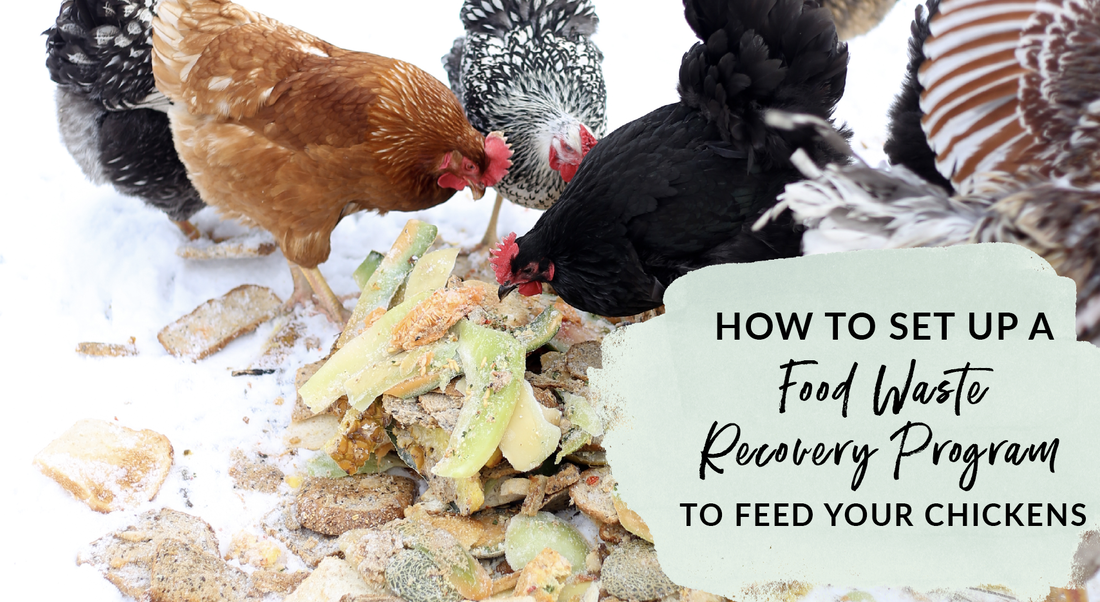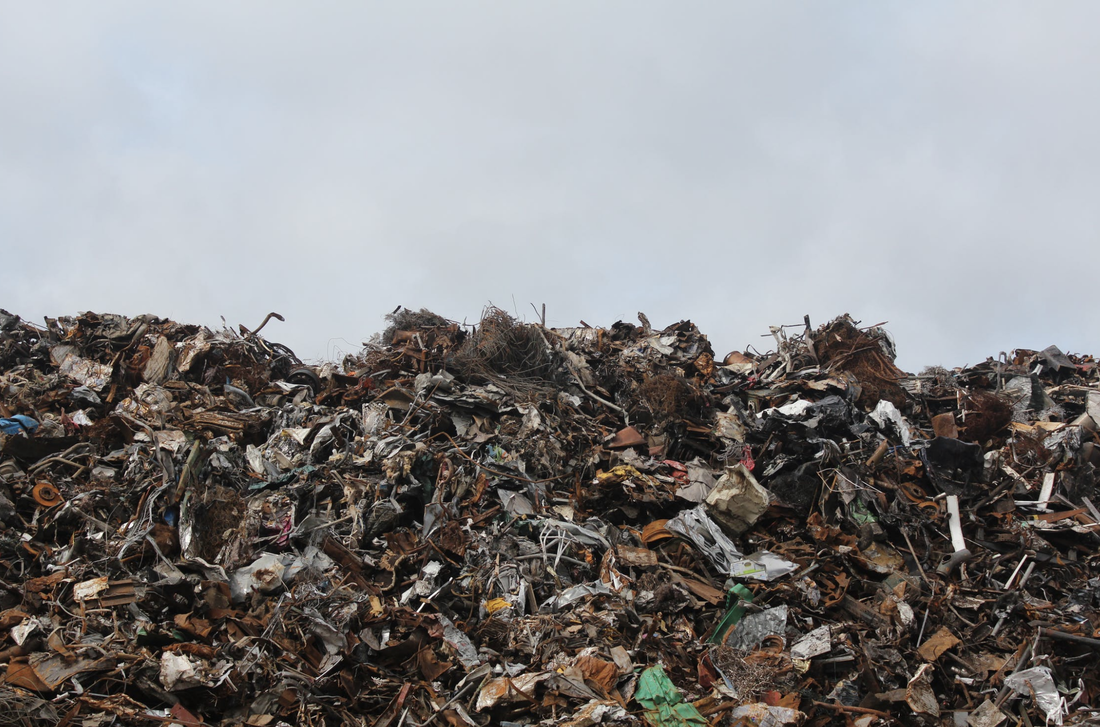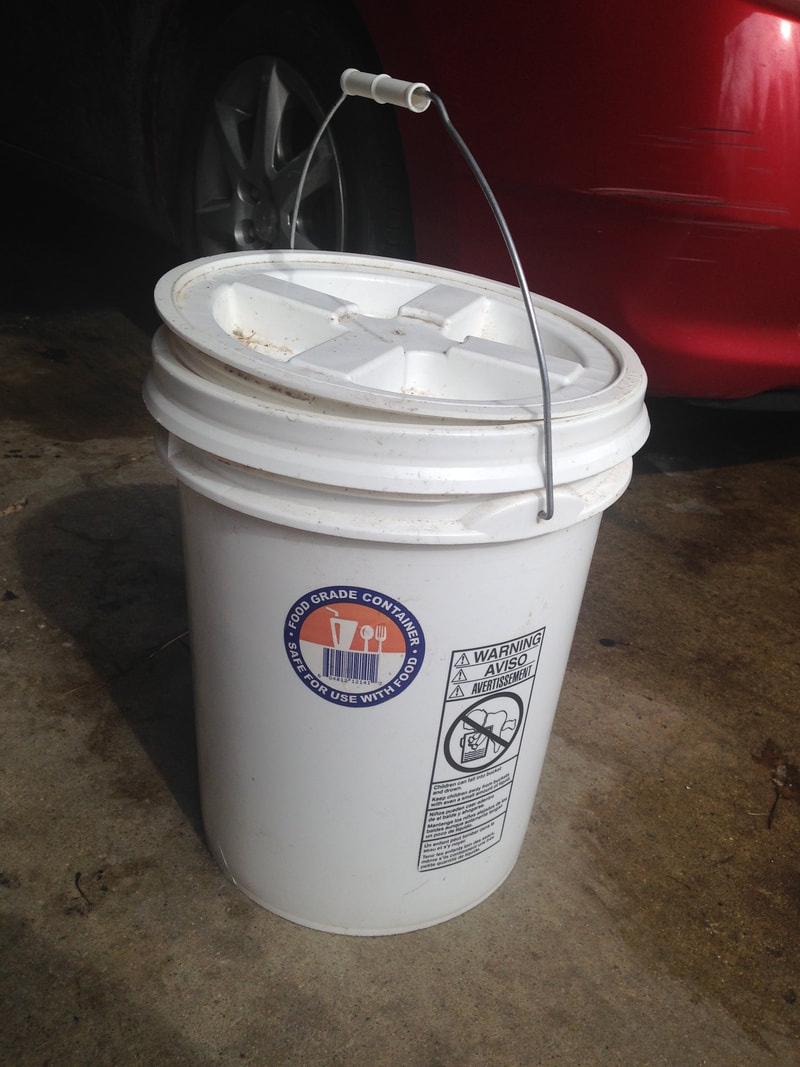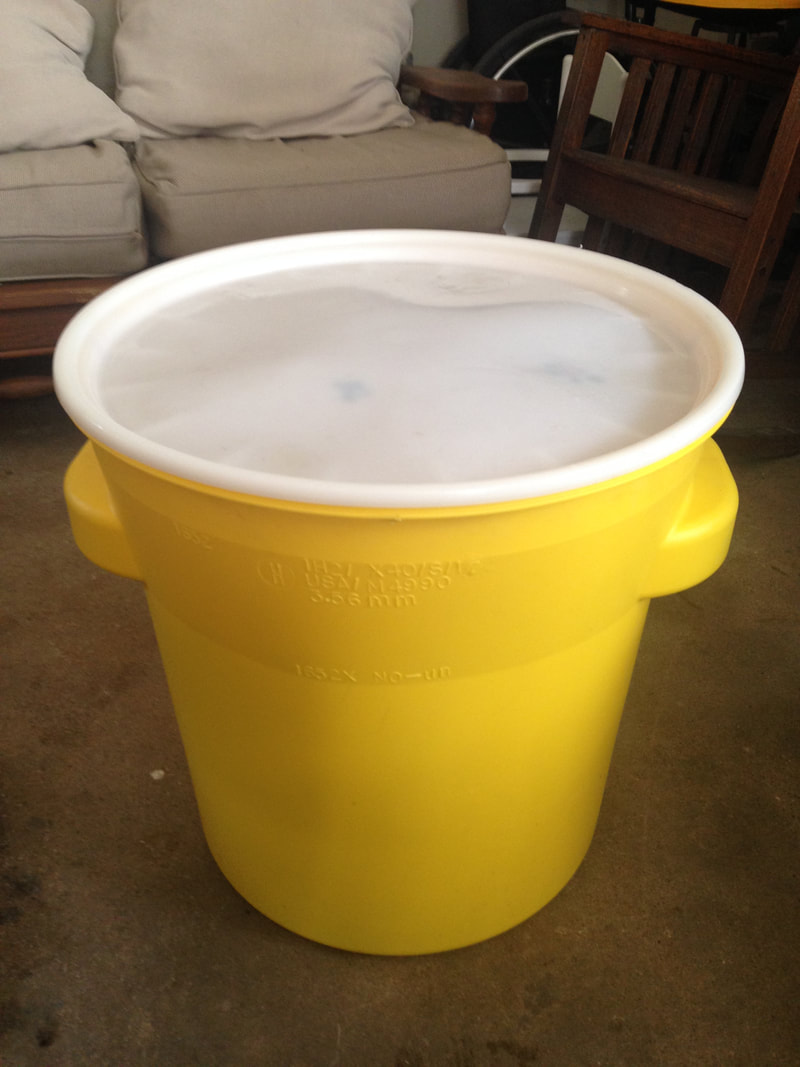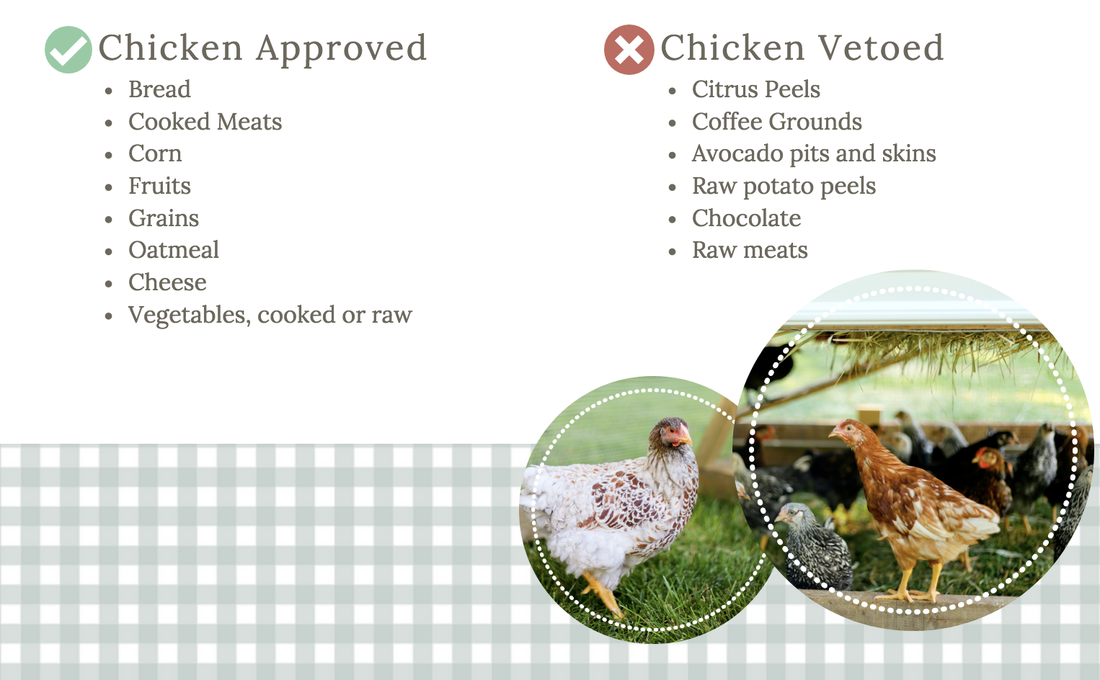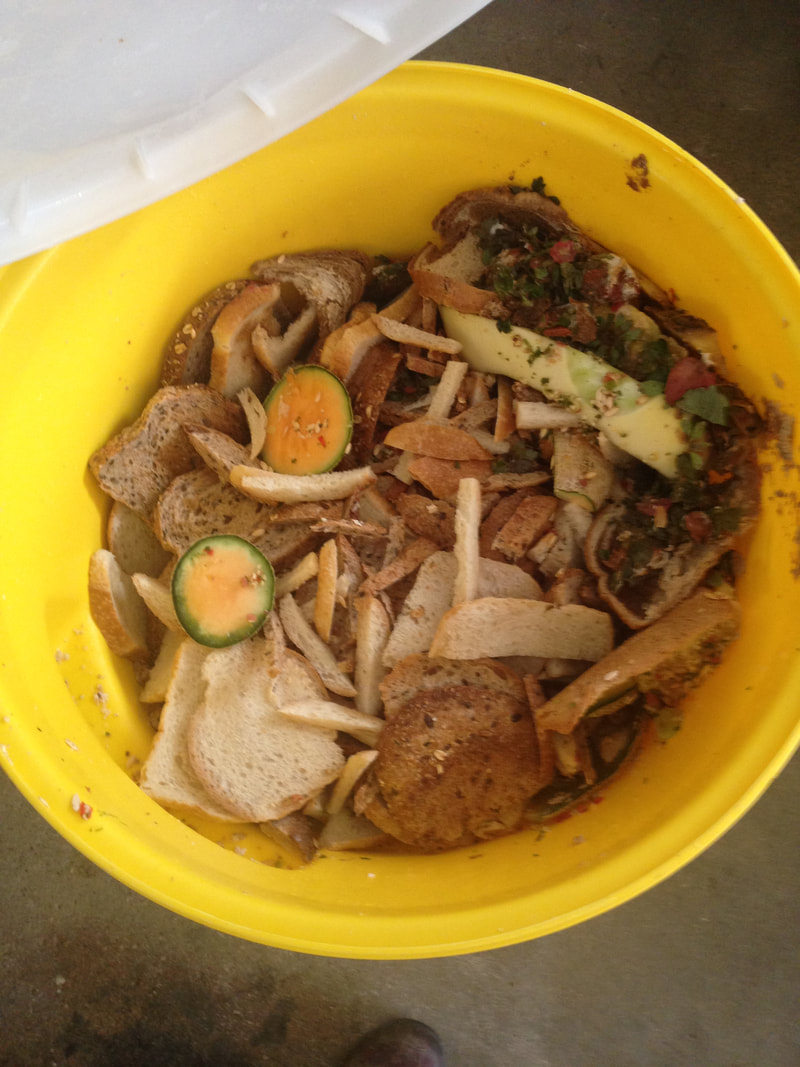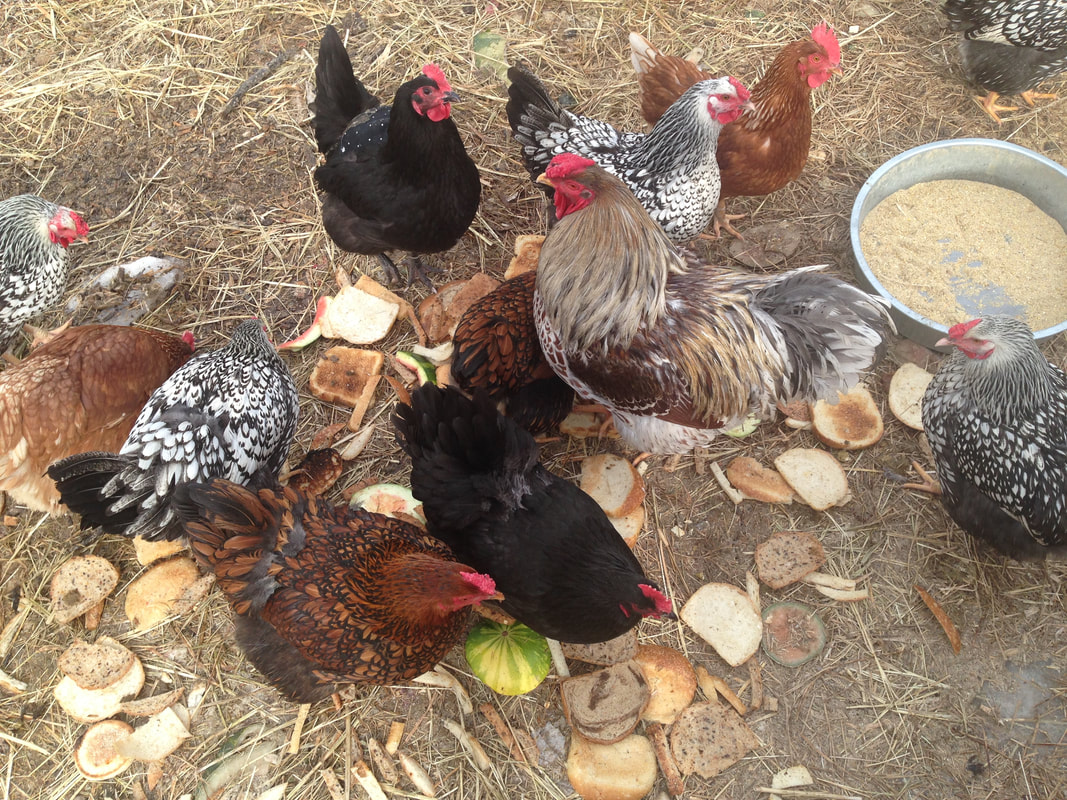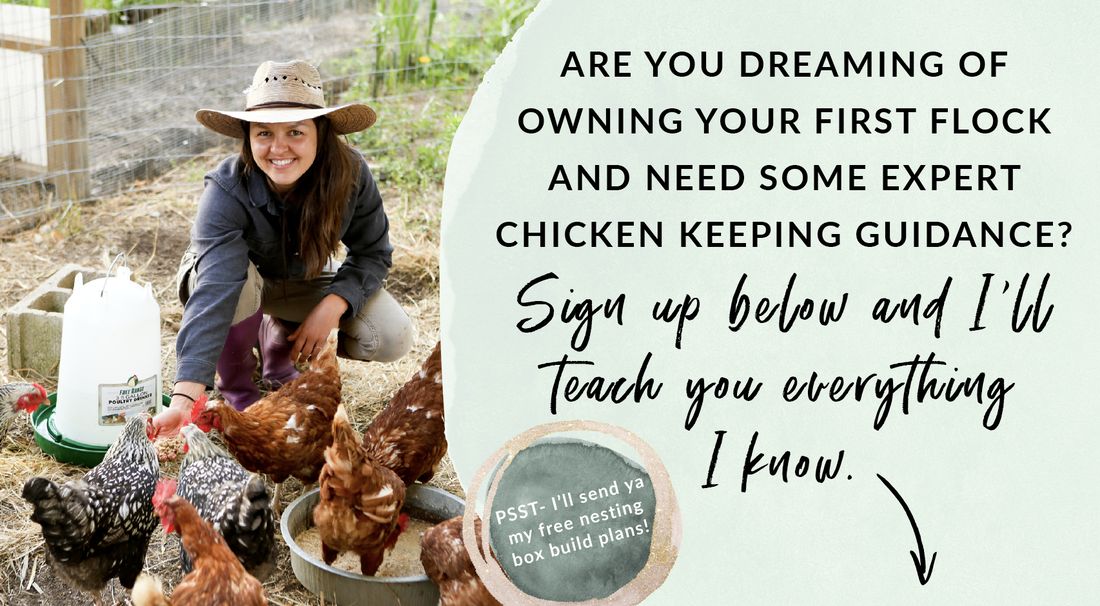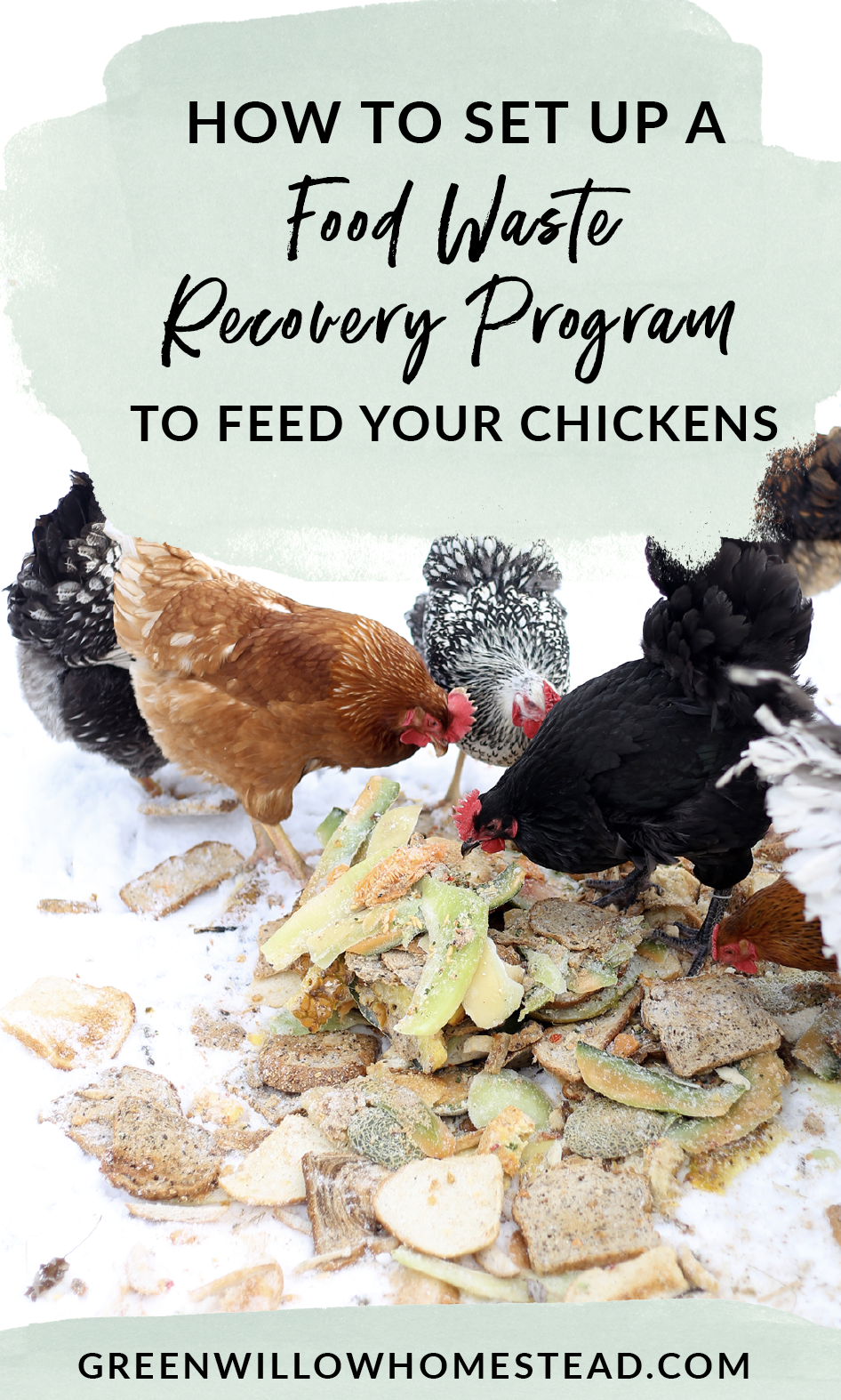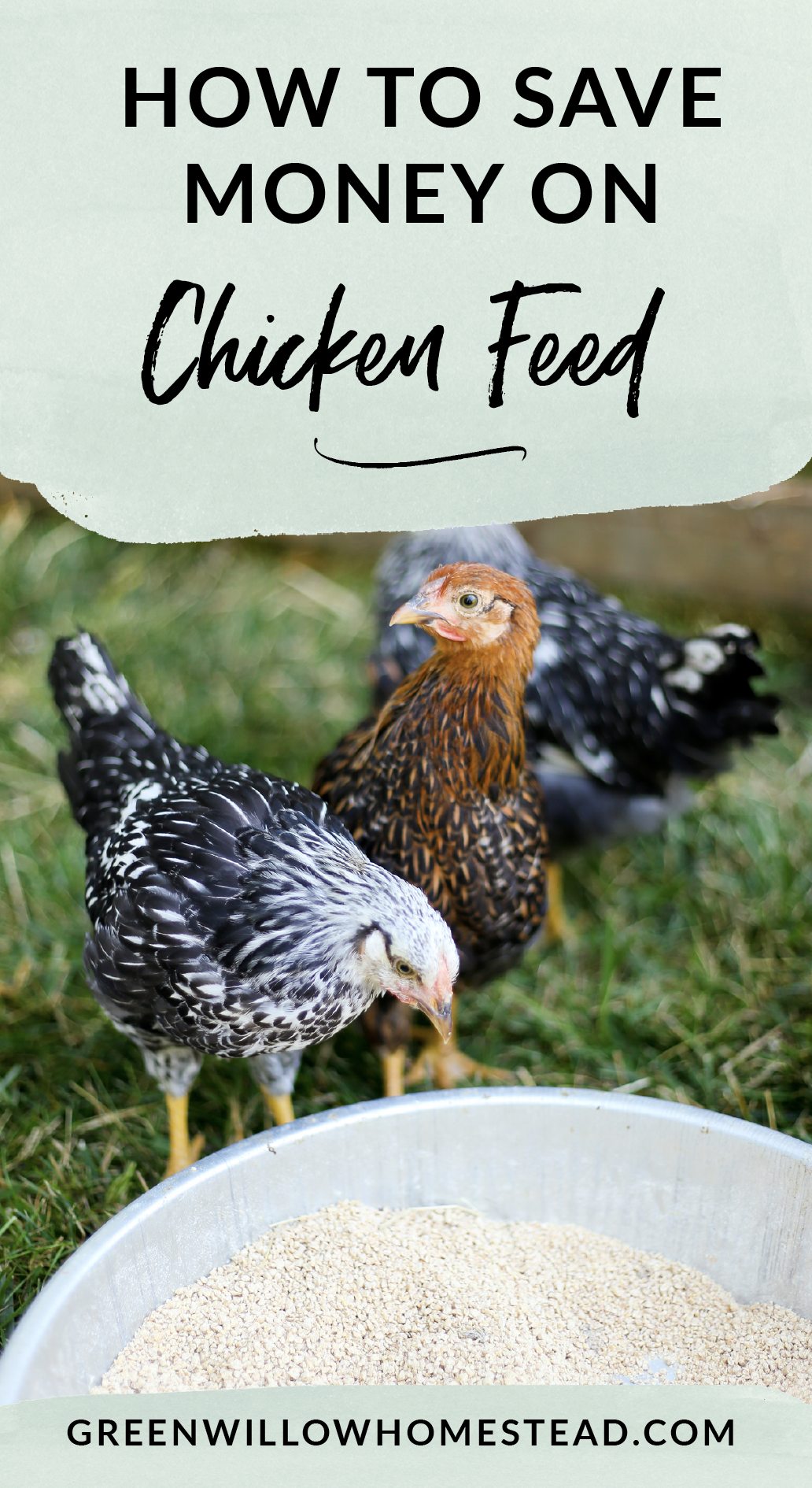|
Here at Green Willow Homestead, we have 40 chicken mouths to feed (and counting!). Our chickens are definitely spoiled. We allow them access to pasture, they freely browse a MOSA certified Organic Chicken Feed, and we give them all our chicken-approved kitchen scraps. When I started to keep track of our expenses though, reality smacked me right in the face. We were spending nearly $175 a month on organic chicken feed! With 40 laying hens producing 3 dozen eggs a day, we technically can rake in $450 a month in egg sales, unfortunately, in the winter this just isn’t the case. Egg laying slows way down as we lose daylight, but the amount these cluckers eat stays the same. I had to put my thinking cap on. How can I cut my feed costs when egg laying can’t foot the bill? Enter a food waste recovery program!
To put it simply, a food waste recovery program is when you partner with a local business that produces food waste, i.e. a restaurant or food shelf, to collect what would otherwise go to a landfill and, instead, compost it or feed it livestock. This partnership can be set up however you want it to: you can volunteer for food waste, you can barter for it, or you can just take it off their hands no questions asked. There are two types of food waste in the restaurant business: pre-plate food waste, which is all the prep scraps that come before food hits the plate; and post-plate food waste, which is what the customer leaves behind instead of bringing it home as leftovers. Both of these options can be recovered in a food waste recovery program.
In this blog post, I’m going to take you through why food waste recovery is necessary, how we got started doing it at Green Willow Homestead, and what equipment you need for successful implementation. Why Recover Food Waste?
According to the EPA, the amount of food waste being shipped to landfills has increased 50% since the 1970s. Let’s break that number down to how much residential waste, i.e. we homeowners, contribute to landfills. The EPA concluded in 2013 that food scraps accounted for 14.6% of the total residential waste. The EPA has also stated that food waste is the single largest contributor to landfill and incineration waste, making up 21% of the overall waste stream. Yikes!
Contrary to what you might think, food doesn’t decompose in landfills, it mummifies. Nearly all landfills are packed too tightly to allow for proper aerobic decomposition, meaning there isn’t enough air to get the composting process going. Instead, an anaerobic environment is created, slowing the entire process down exponentially. When landfills are created, they line the entire hole with a plastic sheet, prohibiting the microbes necessary for decomposition access to food waste. This step of lining landfills is unfortunately necessary, as percolate from the waste can enter aquifers and then get into residential drinking water. When the landfill is full, they cap it off, getting all environmental factors needed to help with decomposition out of the picture, i.e. rain (moisture) and sun (heat). Without the soil and the weather having contact with our food scraps, we won’t see any of that food waste break down. One story of a landfill extraction stated that 20-year-old carrots and corn on the cob were found, still fully intact. What we have going on here is not garbage disposal, but garbage preservation. Greenhouse gas emissions, specifically methane, is our next offender when it comes to tossing food scraps into the garbage. The amount of methane gas that is emitted from rotting food in landfills accounts for 11% of Greenhouse Gas emissions, but it is 28-36 times more potent than carbon dioxide. The emission of methane from our food waste is a major contributor to climate change, but we can definitely be a part of the solution. Recycling and composting prevented 87.2 million tons of material away from being disposed of in 2013, up from 15 million tons in 1980. This prevented the release of approximately 186 million metric tons of carbon dioxide equivalent into the air in 2013 -equivalent to taking over 39 million cars off the road for a year. Let’s re-route our food waste and harness the power we have to help in decreasing the methane that’s being released into the atmosphere. How We Got Started
Our numbers didn’t lie, we needed a way to bring in free food to bring down our feed costs for our chickens over the winter. I was inspired to reach out to a local restaurant in my community after watching this awesome video by Justin Rhodes on Youtube.
*Chicken rant moment alert* Chickens are incredible. They are omnivores, garbage disposals, garden workers, and fertilizer machines - all you need to do is give them a pile of organic matter to dig through and they take care of the rest. All hail the chicken.
Okay, back to how we got started with our food waste recovery program. After chewing on this idea for a few months I finally mustered the courage to email a local restaurant with my plan. Let’s talk about what type of restaurants are most likely to say yes to a proposition like this. What Type Of Restaurants Should You Target For Food Waste Recovery?
This may be a no-brainer, but don’t waste your energy contacting a major chain restaurant. We are a small five-acre farm and the amount of clout we have is minimal. Chains will likely not be flexible with your time schedule, they may feel like food waste recovery is too much work, and the whole “local food” thing doesn’t really fall in line with their values (most of them being fast food based).
Instead, find a small local restaurant that is family owned, that is relatively new (opened within the last five years), and has a statement on their website that they utilize local food in their menu in some way. These types of food establishments will be primed to say yes to you because they clearly already care about the local food movement, and in turn, they care about food waste and reducing their landfill footprint. Another thing to consider is what type of food the restaurant puts out and if the majority of it is chicken friendly. Personally, I don’t want my chicken eating...chicken... so finding a burger joint or brunch spot was high on my list. Salad bars, barbecue, and even sushi joints are great targets. Be sure to scope the menu online or in person to see what type of food waste you can expect if the establishment says yes. I scoped out my favorite brunch spot in Milwaukee, Mimosa Breakfast and Brunch as my first hopeful target. Mimosa is owned by an awesome Greek family that has tons of local food on their menu. When I emailed them initially I had some semblance of a plan and my “why” was very clear. Next, let’s talk about the best way to approach a local restaurant about a possible food waste recovery program partnership. How To Propose A Food Waste Recovery Program
In this digital age, my vote is to go the email route. When you call an establishment you often don’t get the right person on the phone who is in charge and would be the one to give the official yes. When you send an email, you give the establishment time to digest your proposition without putting them on the spot. I sent an email to Mimosa that looked like this:
Hi there,
This email generated a response within fifteen minutes! We had a meeting the next week, and the day after our meeting I was picking up 35 gallons of food waste for my girls. This is because I did my homework. By finding a small local family-owned restaurant that is an active part of your local food movement, I guarantee you will be met with the same level of success.
Please note: The links below are affiliate links, meaning at no additional cost to you, I will earn a commission if you end up clicking and purchasing an item. I worked hard to find my trusted favorites and I want to share them with you so you don't have to deal with all the crappy junk I had to go through. Nuff said.
A Food Waste Recovery Plan And Supplies
From the get-go, my philosophy was to make the process as easy as possible for the restaurant. When I came to our in-person meeting I had a list of supplies I was going to get and a rough plan.
In the restaurant kitchen, they have two, five-gallon buckets. One bucket is used for pre-plate food waste near their prep station. The other bucket is placed where they scrape dishes before they are washed, capturing post-plate food waste. Once those five-gallon buckets are full, they dump them into a large 35-gallon bucket that sits outside. This outdoor bucket is heavy duty, so the elements and scavengers can’t get to my food waste stash. I bought four, five-gallon buckets, and two 35-gallon buckets, that way every time I come to pick up I can swap the full buckets for clean empty ones.
I created a list for the restaurant on what is and isn’t chicken friendly. See below! From there, they took the list and laminated it to the bucket lids to remind their staff. Feel free to steal it and use it too!
We also talked about when their busiest days are, so for a while I was picking up twice a week. Then we settled on one time a week after we figured out the flow of things. In the summertime when things are hot, I’ll be picking up more often so food doesn’t spoil.
How Much Have We Saved On Feed Costs?
At this point, we have reduced our feed costs by 25%, which is great in my book. We also reroute food waste from going to our local landfill, which is truly the big win. I may increase the number of establishments I pick up from next winter as our flock size grows, but for now, this works for me.
I hope this blog post inspires you to create your own food waste recovery program where you live! Do you have chicken feed costs that are through the roof? How have you brought them down? Comment below and let me know!
Thank you!You have successfully joined our subscriber list.
3 Comments
Felicity
9/21/2021 05:21:15 pm
Hi! My question is this…do you worry that your chickens aren’t getting their nutritional needs met? All the guides I read online seem to say that anything other that purchased feed is a “treat” and should be no more than 10% of a chicken’s diet…is this just a ploy to sell more feed? We only have 7 chickens…just finished our chicken tractor using your design! So I think I’m more curious about asking our neighbors for their scraps or something rather than going to a restaurant…but curious if you have advice about the percentage of their diet that should come from food waste.
Reply
Kelsey
9/22/2021 08:31:32 am
I think offering feed free choice at all times is important. Chickens can self regulate their nutritional needs. We definitely saw a reduction in feed costs / feed eating when we had food scraps available to the hens. I'd say 30% - 40% came from food waste. We had a large flock of over 90 hens at the time. You should definitely go to neighbors!
Reply
Felicity
9/23/2021 06:54:23 am
Super helpful! Thanks! The Justin Rhodes video was super enlightening too! Leave a Reply. |
Meet Kelsey,Thanks for stopping by Green Willow Homestead! From chicken rearing to composting, we've got our hands full and we love sharing what we've learned along the way. Follow along as we turn the 80 acres we call home into a farm that serves its community and a homestead that nourishes us throughout the seasons. Grab the EbookListen in!FREE Guide!Tune in to our YouTube ChannelInspirationsCategories
All
Favorite Books of 20241. Erosion
2. Braiding Sweetgrass 3. As Long As Grass Grows 4. The Small Scale Poultry Flock 5. The Zero Waste Solution Archives
April 2024
|
FOLLOW KELSEY ON INSTAGRAM!
As an Amazon Associate I earn from qualifying purchases. |

